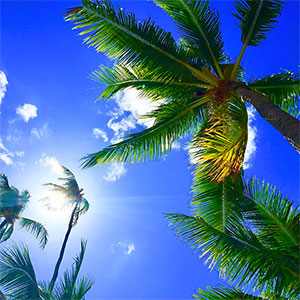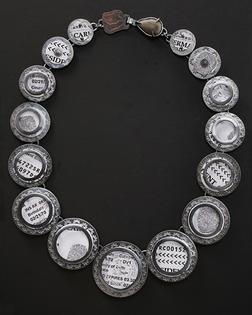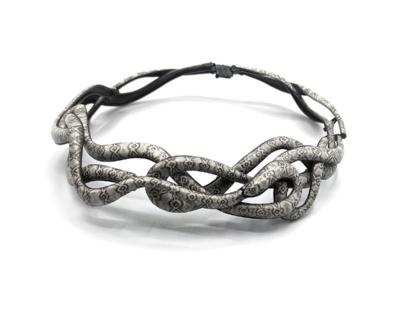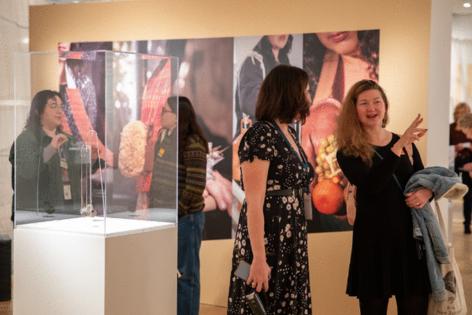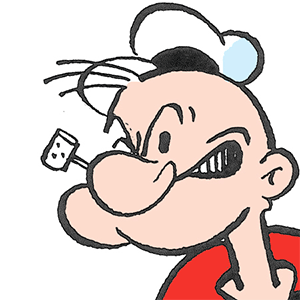San Diego Jewelry Exhibit Reflects Border Life Reality
By Nicola Bridges
The La Frontera exhibit at San Diego's Mingei International Museum is a thoughtful showcase of the juxtaposition of life at the U.S.-Mexico border, reflected in the artists' clever craftsmanship and using precious and mundane materials to depict the clash of border cultures.
Silver, bronze and gems are paired with plastic, litter, barbed wire, bent steel and worn, torn and fraying fabric. Despite the crudeness of the materials, they're thoughtfully crafted by leading artists from both sides of the border into exquisite adornments: necklaces, purses, bracelets, rings -- even a pair of glass shoes.
La Frontera ("the border") is part of a yearlong celebration of San Diego and Tijuana, Mexico, receiving the first binational designation as World Design Capital by the esteemed World Design Organization. WDC 2024 leadership declares it a once-in-a-lifetime opportunity to shape the future of the region through the power of design by showcasing the joint region as a global hub for design, arts, innovation and culture to foster lasting economic, civic and environmental impact.
Who knew that a display of jewelry and wearable art could achieve this lofty goal? They're typically not the first things that spring to mind when you ponder the politics and strife of life at the border. But it works -- exceptionally well.
During my recent visit, Mingei Creative Director Patricia Cue provided an eloquent narration conveying the museum's sensitivity to the realities of what people of both nations think of when they envision the border.
"Material as Storyteller" displays work made of found materials representing different border ideas. There's "Tarjeta de Residencia" by artist-maker Mayte Amezcua, who used copper, sterling silver and pieces of a green card to craft a metaphorically and visually stunning necklace.
"Many of these materials have a rustic finish but are elevated in how the artists have crafted the metals," Cue said, noting the tiny circular slivers of a green card encased in elaborate metal rings.
Within the "The Body and Identity" section are replica cardboard shoes by Diana Benavidez, an artist who specializes in making pinatas.
"It's a reference to the trade of goods within both sides of the border, where U.S. items make their way to Mexico to be reborn as new or different products," Cue said.
Another eye-catcher is a long, thin, fabric map strip with sewn thread lines, intended to be worn over the torso.
"It's representative of the path of the train that we call 'la bestia,' 'the beast' (also known as 'el tren de la muerte,' 'the train of death') that immigrants ride on top," Cue said. "The zig-zaggy lines remind you of the train tracks by the gesture of the sewing machine thread along the fraying fabric."
One of Cue's favorites is a brooch by Motoko Furuhashi made of a piece of packing tape intricately rolled into itself to resemble a rose in a metal casing. Furuhashi went to the pedestrian line at San Ysidro's border crossing, laid the sticky tape the length of the line and rolled up whatever stuck from people crossing over: dust, litter, specks of paper and bits of unidentifiable detritus.
There's a leather designer-looking purse by Kerianne Quick that has been molded around a plastic gallon water jug, representative of the thousands left strewn across the Southern California border scrubland. Hollow in the back, it shows their futility, a gallon not being nearly enough to survive the heat and desert dust of the arduous and dehydrating immigrant journey.
Georgina Trevino, a well-known border artist who crafts shoes, belts and jewelry for celebrities, made a pair of silver flip-phone cases adorned with tiny milagro (miracle) good-luck charms. One hangs on a charging cable neck-loop pendant at the Mingei, the other at Centro Cultural Tijuana, the WDC 2024 sister-city exhibition center. Brilliantly, the display includes a phone number you can text to tell Trevino your thoughts about her pieces and life on the border. She's planning to do a future project based on the text responses.
Another exhibited at both locations is a pair of glass shoes, one shoe at each site. They're by Tanya Aguiniga, who performed crossing the border wearing the basic, flat, crisscross sandals made from blown glass, the soles patterned to resemble tire tread.
"The glass juxtaposes the Cinderellalike dream of crossing the border with the rubber-tread pattern referencing the cheap sandals made from tires that some migrants wear when crossing, and the role the shoes play in their journey," Cue said.
In real life, these sandals end up discarded and strewn across borderland.
"The exhibition shows how the artform is constantly being redefined by artists responding to current issues and as a medium to tell their own stories of personal identity and place," said Ariana Torres, Mingei's venue curator.
Emotionally charged, the exhibit certainly makes you pause and think. You might wonder how the artists came up with their minimalistic but poignant, culturally complex or sometimes politically cutting ideas. You'll perhaps nod knowingly or maybe wince at La Frontera's raw revelations. At the very least, it will leave you pondering the clash of border cultures and how designers can be outstanding and astounding truthtellers.
----
WHEN YOU GO
La Frontera, Mingei International Museum, Balboa Park, San Diego, California, Admission, $15. Tuesday to Sunday, 10 a.m. to 5 p.m., Friday 10 a.m. to 8 p.m.: www.mingei.org
========
Nicola Bridges is a freelance writer. To read features by other Creators Syndicate writers and cartoonists, visit the Creators Syndicate website at www.creators.com.
Copyright 2024 Creators Syndicate, Inc.
